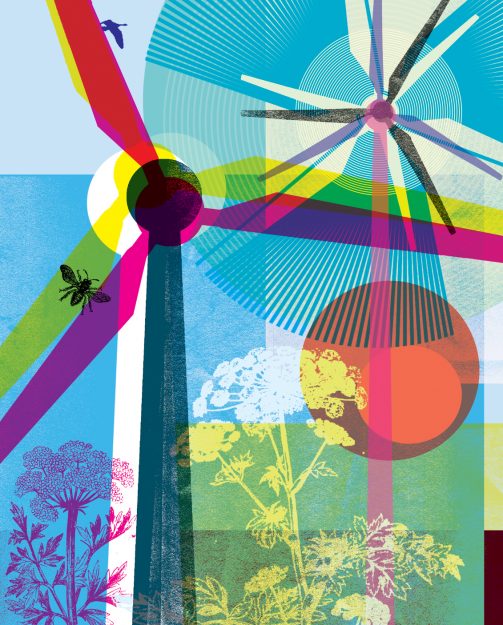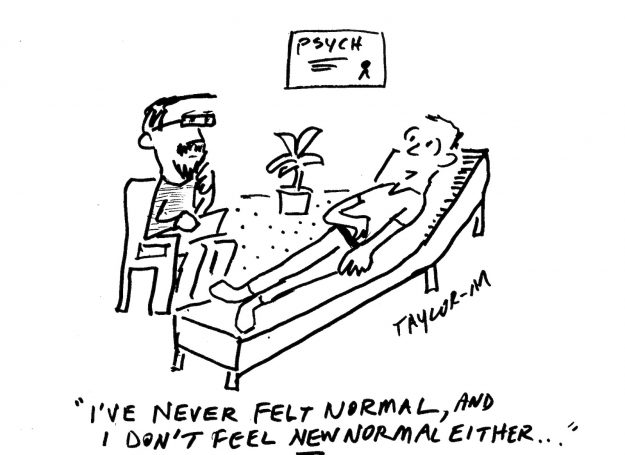It’s nice to try, as Bernat Font-Clos does (“The New Tradition of Early Buddhism”), to put a gloss of consistency on the “actual” Buddhist teachings, but I think it’s incredibly difficult. For example, the Sakalika (The Stone Sliver) Sutta states: The Buddha’s “foot had been pierced by a stone sliver. Excruciating were the bodily feelings that developed within him . . . but he endured them mindful, alert, and unperturbed.”
So did the Buddha eliminate pain or not? And then we have the Sallatha (The Arrow) Sutta: “The well-instructed disciple of the noble ones, when touched with a feeling of pain, does not sorrow, grieve, or lament. . . . So he feels one pain: physical, but not mental. Just as if they were to shoot a man with an arrow and, right afterward, did not shoot him with another one.”
This seems psychological to me. Then we have the Maha Vacchagotta Sutta (Greater Discourse to Vacchagotta): “There are not only one hundred . . . but far more lay followers, my disciples, clothed in white, enjoying sensual pleasure, who carry out my instruction.”
This point seems important and interesting, but few details survive. This is not to say that this isn’t a point of contention.
It’s difficult to read some parts of the Pali canon and not conclude that the Buddha thought all existence was a dumpster fire. But we can’t conclude that the discourses are consistent on the matter, we don’t know what is missing from the surviving discourses, and revisionism started almost as soon as the Abhidharma texts, possibly even in early Buddhist history.
—Stephyn Butcher
Bernat Font-Clos responds:
The Pali canon is a vast collection of texts, and people debate how internally consistent it is or how it relates to what the historical Buddha said. I agree, there may well have been teachings not recorded in the canon, perhaps particularly teachings to laypeople. But whether the discourses are consistent or not depends on what is in them; it cannot rest on what may not be there. I look at those texts as the collective creation of the first generations of Buddhists—monastics, and probably mostly male—and as reflecting how they understood their own tradition and teachings.
Underlying the diversity of the early texts is a general logic or ethos that in my view is quite consistent or at the very least dominant. Lay followers do practice, they become accomplished (usually in the first three levels of awakening rather than full liberation), and still their final goal is to leave behind this changing, unsatisfactory, conditioned existence, even if that should happen in a future lifetime. Neo-early Buddhist teachers use a very different rhetoric, a life-affirming one, and what’s more, they focus not on canonical teachings for laypeople but rather on those for renunciant monastics.
You point out very well how the second arrow is psychological, but early Buddhists yearned for more than a first-arrow-only existence. They had the ambition to not be reborn. No second arrow, no first arrow—the complete ending of dukkha.

T is much to applaud in “How to Bring Our Planet Back to Life” by Paul Hawken, including its optimism, its recognition that individual change causes systemic change, and its call for reverence for all life. But it undermines itself on that last point.
Hawken says that humans and nature are “inseparably intertwined,” but he preserves the separation between them in lines like this one: “The only effective and timely way to reverse the climate crisis is the regeneration of life in all its manifestations, human and biological.”
Are humans not biological?
This separation persists in his Climate Checklist, which urges us to ask, among other things, whether an action “enhance[s] human well-being or diminish[es] it” or “serve[s] human needs or manufacture[s] human wants.”
A lot of humans believe that internal combustion engines, coal-fired power plants, and animal agriculture enhance human well-being (despite palpable evidence to the contrary). As long as we preserve this false separation, many will continue to harbor these delusions. But ask the question as the Buddha might—Do engines, power plants, and animal agriculture enhance the well-being of all sentient beings?—and the answer we get is a clear and resounding no.
—Jeff McMahon
University of Chicago • Forbes
Paul Hawken responds:
Thank you for your thoughtful critique. The phrase “regenerating life in all its manifestations, human and biological” is not intended to separate humans from biology. But it is precisely because people see nature as “other” that this sentence is important. In my book Regeneration, from which the article was excerpted, that phrase is preceded by these three sentences:
Regeneration means putting life at the center of every action and decision. It applies to all of creation. . . . Nature and humanity are composed of exquisitely complex networks of relationships, without which forests, lands, oceans, peoples, countries, and cultures perish.
The guideline asking whether an action “enhances human well-being” is at the core of justice and empathy. Without addressing human suffering, there is no path to regeneration. The book is addressed to our species. We’re the problem. We’re the solution.
Human well-being is at the core of justice. We’re the problem. We’re the solution.
It’s true that people believe fossil fuels and animal agriculture are tantamount to human well-being. Those who are privileged can rhetorically disavow these practices, but the rest of humanity depends upon them for heat, food, electricity, and so on. Transitioning to a society that enhances the living world rather than destroying it does not happen overnight. It requires compassion, thoughtfulness, and a clear delineation of how to enhance human well-being without the destructive practices that you describe. On that we certainly agree.

Thank you so much for the article “Buddhism’s Biggest Open Secret” by Wendy Biddlecombe Agsar. I have been following Buddhism since I was 12 years old at Phillips Andover, at least intellectually, but every time I tried to use concentration meditation I would panic. It was not until I reached my fifties—when I bumped into a teacher from the Plum Village tradition with whom I discussed the problems with concentration meditation—that I started working on metta (lovingkindness) meditation. A few years later, I gradually began to use the “following the breath” method of meditation.
I have questioned meditation as medicine for years, for it seems to me that separating it from ethics and philosophy is not tenable. I co-lead a humanist meditation group with a psychologist on Sunday mornings. Each week I ask the participants to understand that ethics, honesty, and self/other compassion are also required along with cultivating present-moment attention in an open, nonjudgmental way. Thanks again for allowing this article to be in your publication. I think it will do a world of good.
–Rich H Worth, Jr.Signal Mountain, Tenn.
♦
To be considered for the next issue’s Letters to the Editor, send comments to editorial@tricycle.org, post a comment on tricycle.org, or visit us on Facebook, Instagram, or Twitter.